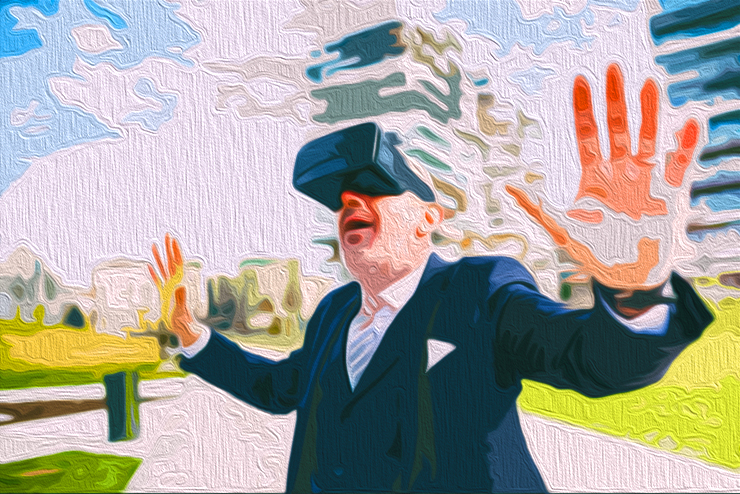
Hey there! Video marketing is taking the digital world by storm, transforming the way brands connect with their audience. Whether you're a seasoned marketer or just dipping your toes into the video realm, staying ahead of the latest trends is key to standing out in a crowded online landscape. Let's dive into the 11 game-changing trends shaping the future of video marketing.
Live Video: Authentic Connections in Real-Time
Engage Your Audience Instantly
Live video has skyrocketed in popularity, offering a real-time connection with your audience. Whether you're hosting a product launch or a Q&A session, live videos create an authentic and engaging experience that resonates with viewers on a personal level.
Smartphone Production: Quality Meets Authenticity
Create Compelling Content with Ease
Gone are the days of expensive equipment. Brands are now harnessing the power of smartphones to create high-quality videos that feel genuine and relatable. By embracing smartphone production, you can connect with your audience on a more human level.
Search-Optimized Videos: Boost Your Visibility
Climb the Ranks with SEO Strategies
Optimizing your videos for search engines is crucial in today's digital landscape. By focusing on keywords, metadata, and user intent, you can enhance your video's visibility and reach a broader audience organically.
Vlogs: Tell Your Story Effectively
Connect Emotionally with Your Audience
Vlogs offer a platform for authentic storytelling, allowing brands to connect with their audience on a deeper level. By sharing behind-the-scenes moments and personal anecdotes, you can build a loyal following that resonates with your brand.
Social Media Stories: Personalize Your Brand
Engage with Interactive Elements
Social media stories provide a unique opportunity to create a personal connection with your audience. From interactive polls to live updates, stories allow you to showcase the human side of your brand and engage with your followers in real time.

AR/VR Videos: Immerse Your Audience
Create Unforgettable Experiences
Augmented Reality and Virtual Reality are revolutionizing the way brands engage with their audience. By incorporating AR/VR elements into your videos, you can create immersive experiences that captivate your viewers and set your brand apart from the competition.
Silent Videos: Enhance Accessibility
Reach a Wider Audience
Optimizing your videos for silent viewing is essential in today's fast-paced world. By adding closed captions and visual cues, you can ensure that your content is accessible to everyone, regardless of their listening environment.
User-Generated Content: Build Trust organically
Empower Your Audience
Consumers trust authentic content created by their peers. By leveraging user-generated content, you can build trust with your audience and showcase real-life experiences that resonate with potential customers.
Interactive Video Content: Engage and Convert
Create Memorable Experiences
Interactive videos provide a dynamic way to engage with your audience. By incorporating interactive elements like quizzes and polls, you can create a personalized experience that keeps viewers hooked and drives conversion rates.
Video Personalization: Connect on a Personal Level
Stand Out with Tailored Content
Personalized videos leave a lasting impact on viewers. By tailoring your content to individual preferences, you can create a memorable experience that resonates with your audience and boosts brand loyalty.
Return of Long-Form Video Content: Dive Deep into Storytelling
Create Meaningful Connections
Long-form video content is back in the spotlight, offering brands a platform to dive deep into storytelling and provide valuable insights to their audience. By investing in long-form videos, you can establish your authority in the industry and build a loyal following that values your expertise.
As the video marketing landscape continues to evolve, staying adaptable and innovative is key to success. By embracing these trends and prioritizing your audience's preferences, you can create a video marketing strategy that truly resonates with your viewers. Ready to take your video content to the next level? Reach out to us for expert guidance or explore our SEO Blog Writing Service for tailored solutions that elevate your brand's online presence.
Frequently Asked Questions
What is the difference in marketing and advertising?
Advertising is a type of communication that promotes products and brands. Advertising has a clear call of action. For example, “Buy now!” or “Click here.”
Marketing is another way to communicate the mission, vision and values of your company to potential customers. Marketing helps you build relationships with your current customers as well as prospects.
Online sales of shoes can be a great example of marketing. You may use marketing to tell a story about you and what you have to offer. Your history, philosophy and commitment to quality could be discussed. You could even share testimonials of satisfied customers. Perhaps you can even hold an event where people are encouraged to visit your website by giving away free shoes.
Marketing, or telling stories, is in essence about telling stories. Advertising is all about selling products.
What are the most important types of marketing?
Marketing is about communicating ideas, values, or messages to consumers. Marketing is often used interchangeably with advertising. Marketing encompasses more than advertising. Marketing is all communication that promotes and markets a product or service.
Marketing is comprised of branding, promotion, as well as distribution. Branding is the way a company presents itself to its target audiences. Promotion is the act of getting attention for your brand by using paid advertisements, free promotions, and public relations activities. Distribution is the process of getting your message out to your target audience. Although distribution can be done using traditional methods like television, radio or print, it is now easier with the advent of new technologies.
What is eCommerce marketing?
Ecommerce marketing is simply online shopping. It's selling products via the Internet. This includes buying goods from companies and selling them over the web. If you are an individual vendor, this includes selling on eBay. You might also own a business where you sell products for profit. The key point here is to make money by selling items online.
Here are more details concerning eCommerce marketing
A successful eCommerce website requires you to decide what products you want. Then, you should decide whether you want to offer only one item (like a book) or multiple kinds (such as books and DVDs).
Once you know the product you offer, you will need to find a supplier. A supplier is the company that produces and sells what you want. You would, for instance, need to find a supplier that makes and sells greeting card products if you were to begin selling them.
Once you have found a supplier, you need to make a website that will display the products for buyers. Some suppliers will provide templates, while others will require that you design the template. Once you have a website, you will need to market it. This could include publishing articles on blogs or forums, advertising on Google Adwords websites and sending emails relevant to contacts.
You have many options when it comes time to promote your eCommerce business. These channels include email, social media, search engines, and mobile apps.
- Email marketing is a good choice for most businesses. It's cost-effective and easy to implement. And it delivers results. But, it takes a lot of time and effort to generate quality leads.
- Search engine optimization (SEO), is a technique that improves a website's ranking for certain keywords. Link building is a common method to improve pages' rankings in search engines.
- LinkedIn and Facebook are important for business promotion. Many people use these websites every day to stay in touch with family and friends. Posting interesting articles on these sites can help you reach thousands of potential customers.
- For eCommerce marketers, mobile apps can also be a great tool. People love using their smartphones and tablets to shop. A mobile app lets you reach customers no matter where they are.
eCommerce has grown to be a huge business. There are many avenues to promote your small business. Make sure you choose wisely to reap the rewards of eCommerce marketing.
Social Media Marketing is an excellent way to market your business online. It is an excellent tool to spread brand awareness and generate leads and sales. Here are five ways social media marketing can help boost your business.
- Create a Facebook Fanpage – This allows customers to interact directly via Facebook. You can upload photos, videos and other files.
- Promote Your Business on Twitter – Twitter is another great place to share information and connect with people. Use hashtags to increase visibility.
- Post Videos on YouTube. Many people enjoy watching these videos. If people like what they see, they may click on your website.
- Host Live Events. Organizing live events allows potential clients to meet face-toface. They can ask any questions about your services and products.
- React to Customer Review – Positive reviews will build trust between you and your clients, which in turn will encourage repeat purchases. Make sure to respond quickly to any negative comments.
Statistics
- Many experts recommend you share 20% of your promotional content and 80% of other valuable content you find. (marketinginsidergroup.com)
- From 2020 to 2022, eMarketer predicts that digital marketing will grow by 36% and take up 54% of marketing budgets! (marketinginsidergroup.com)
- Meanwhile, a PartnerPath poll found that co-marketed ads help 68% of consumers arrive at a buying decision before even speaking to a salesperson. (influencermarketinghub.com)
- Companies that use personalization are seeing revenue increases ranging from 6-10%. (blog.hubspot.com)
- According to statistics, 60% of online shoppers worldwide actively search for coupons before purchasing from a virtual shop. (influencermarketinghub.com)
External Links
hubspot.com
blog.hubspot.com
influencermarketinghub.com
youtube.com
How To
Six types of Ecommerce Marketing
How do I market an eCommerce store?
Ecommerce marketing has been called one of the most difficult marketing tasks. This requires you to get to know your customers, their buying habits, and how they interact and use your products and services. You can then create a strategy that will help you achieve your goals.
There are six types of eCommerce marketing strategies:
- Product Strategy – This is the first step in determining the type of product that you want to sell online. There are three main categories: physical goods (things), digital goods (services), and membership sites. After you've chosen which category of goods you want to work with you will need decide whether you offer wholesale or regular retail prices. Wholesale pricing means that you set the price at which your products are sold, while retail pricing means that customers pay directly for your products.
- Pricing Strategy – Next, figure out how much revenue you would like to make by selling your products. Profit margins and competition are important. Shipping costs, taxes, and other fees should also be considered. There are two ways to increase profits when pricing your products: decrease your cost per unit and/or increase sales volume.
- Promotion Strategy – This is the fun part! It is important to create a promotion strategy that will work best for your company. Some ideas include offering free shipping, special discounts, exclusive deals, and coupons. You can also brainstorm new promotional ideas if you don't already have them.
- Shipping Strategy – Once you have figured out how to market your products, it is time to consider how you will get them to customers. Do you ship via USPS, FedEx, UPS, DHL, or another delivery service? Do you intend to use a fulfillment facility or do all the work yourself?
- Merchandise Management System – Your merchandise management system includes software that helps you manage inventory, track orders, fulfill orders, and communicate with suppliers. You can choose from many different systems depending on your budget and preferences.
- Customer Service Strategy: Finally, it is important to create a customer-friendly strategy for your company. What support options are available? Will they be via email or phone? Customers can contact you via live chat, social media or snail mail.
————————————————————————————————————————————–
By: 10659
Title: The Future of Video Marketing: Elevate Your Strategy with These 11 Essential Trends
Sourced From: internetlib.org/the-future-of-video-marketing-11-trends-you-need-to-know/
Published Date: 3/20/2025 1:39:53 AM
